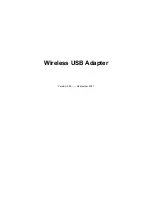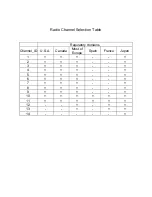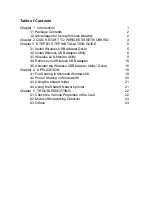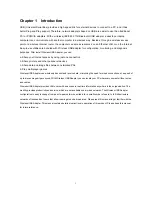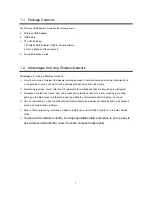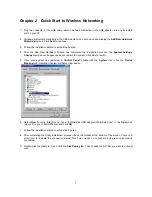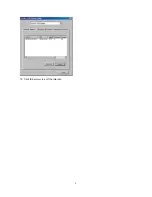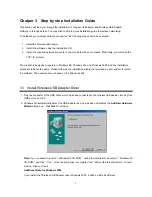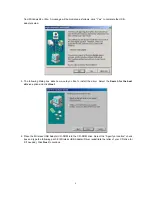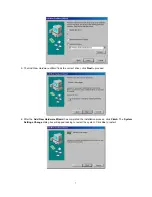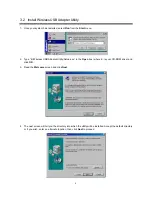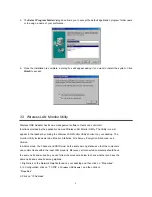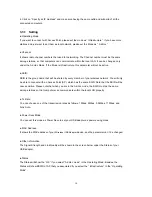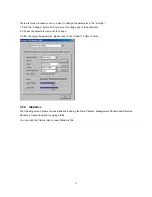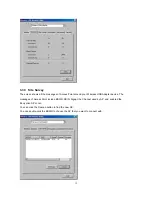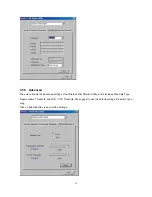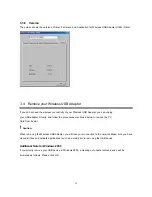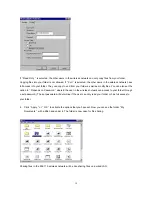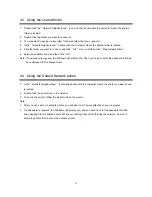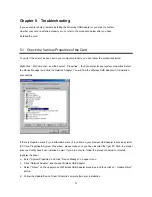
10
4. Click on “Specify an IP Address” and make sure having the same netid and subnetid of all the
connected computers.
3.3.1 Setting
l
Operating Mode:
If you want to connect with Access Point, please set the mode as” Infrastructure”. If you have more
stations and just want to set them as local network, please set the Mode as ” Ad Hoc”.
l
Channel:
It shows radio channel numbers that used for networking. The Channel number must be the same
among stations, so that computers can communicate within the local LAN. It can be changed only
under the Ad Hoc Mode. If the Mode is Infrastructure, this parameter will not be active.
l
SSID:
SSID is the group name that will be shared by every member of your wireless network .You will only
be able to connect with an Access Point (AP), which has the same SSID. Note that the SSID will be
case sensitive. Please note that when you are in the Ad-hoc mode, the SSID must be the same
among stations so that computers can communicate within the local LAN properly.
l
Tx Rate:
You can choose one of the transmission rates as follows, 1Mbps, 2Mbps, 5.5Mbps, 11Mbps, and
Fully Auto.
l
Power Save Mode:
You can set this mode as Power Save to set your USB adapter as power saving mode.
l
MAC Address:
It shows the MAC address of your
Wireless USB Adapter
device, and the parameter can’t be changed.
l
Other information:
The Signal Strength and Link Quality will be shown in the screen below under the Status of your
USB adapter,
l
Status:
The Status will show the “OK” if you select “Ad Hoc mode” in the Operating Mode. Besides, the
Status will show BSSID of AP that you associated if you select the “Infrastructure “ in the “Operating
Mode”.

